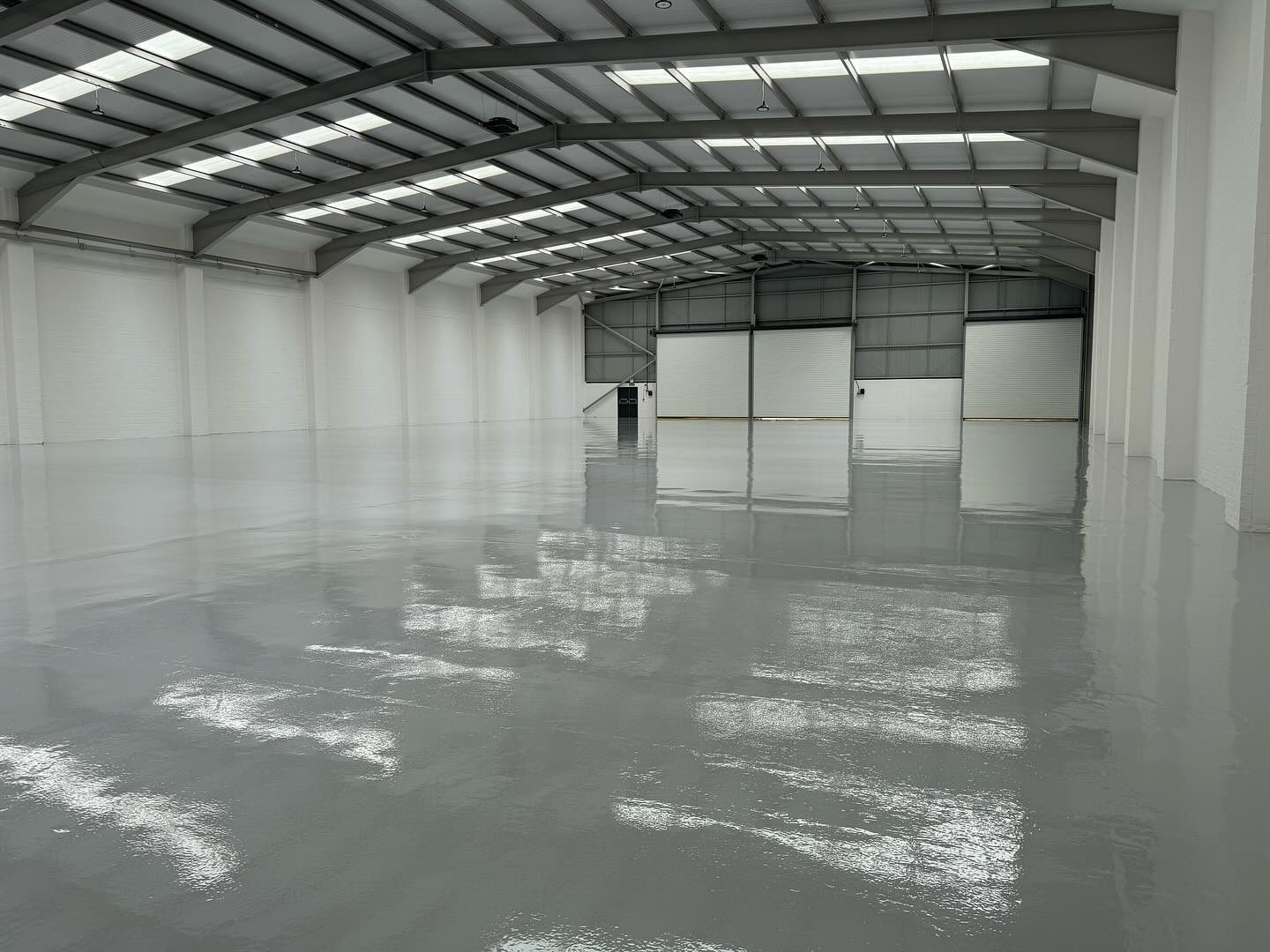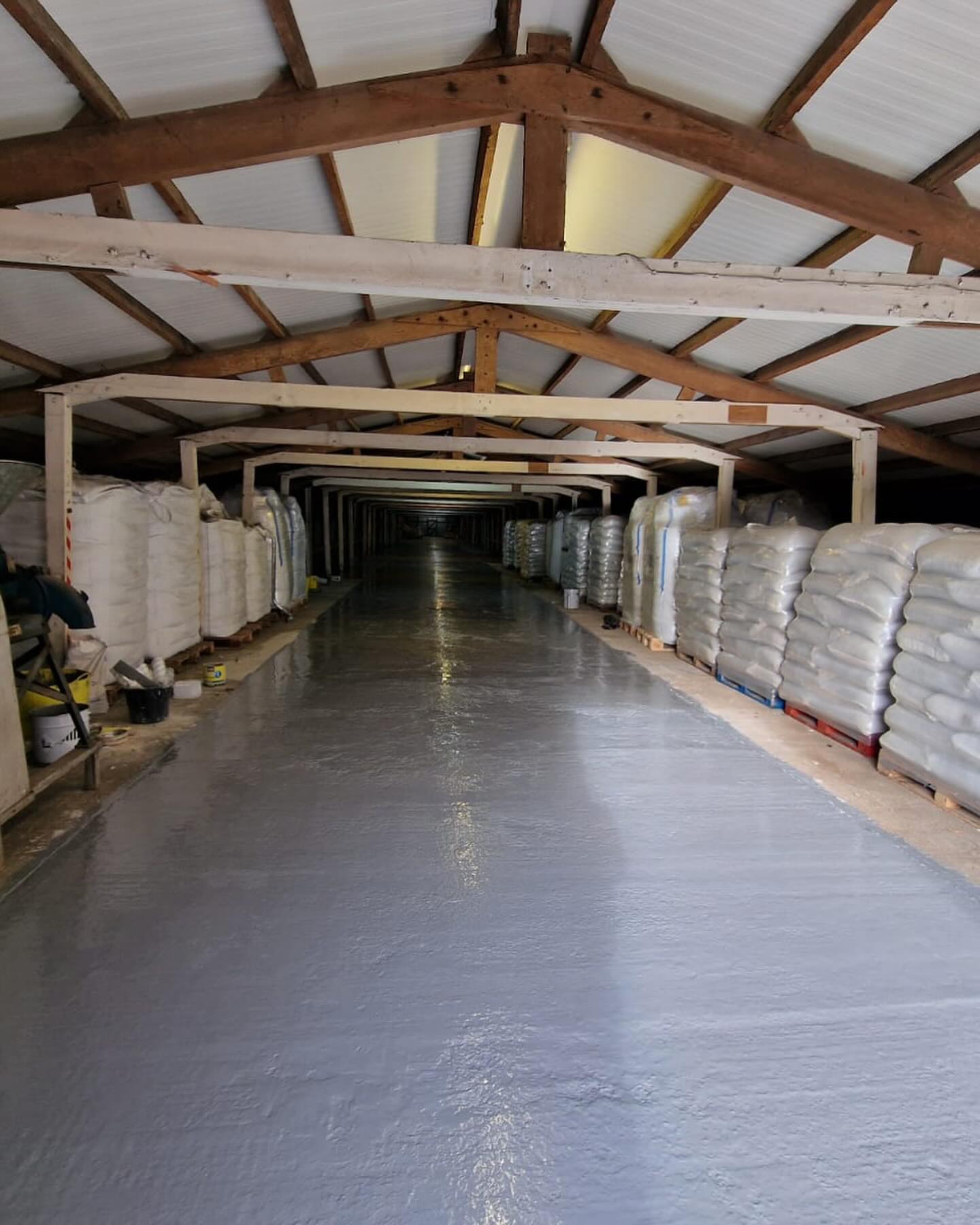Shot blasting creates an aggressive CSP 3-5 profile ideal for thick coatings at £11-15 per m², removing 1-3mm of concrete at 100-200m² per hour. Diamond grinding produces a smoother CSP 1-3 finish perfect for thin coatings at £11-15 per m², removing 0.5-2mm at 50-100m² per hour with better edge control and less dust.
Proper concrete preparation determines whether your epoxy floor lasts 20 years or fails within 20 months. The choice between shot blasting and concrete grinding services affects not just the coating's adhesion but also the final appearance, texture, and performance. After preparing over 1 million square metres of concrete across London facilities, we understand exactly when each method delivers optimal results.
Understanding Surface Profile Requirements
Shot blasting propels steel shot at high velocity, creating a textured surface profile between CSP 3 and CSP 5. This aggressive profile resembles coarse sandpaper, providing exceptional mechanical adhesion for thick coatings. The random impact pattern ensures no directional grinding marks that might telegraph through thin coatings.
Diamond grinding uses rotating diamond segments to abrade the surface, producing CSP 1 to CSP 3 profiles. The controlled cutting action creates uniform scratch patterns ideal for self-levelling epoxies that need smooth substrates. Multiple passes with progressively finer diamonds can achieve near-polished finishes for decorative systems.
| Profile Aspect | Shot Blasting | Diamond Grinding |
|---|---|---|
| CSP Range | CSP 3-5 | CSP 1-3 |
| Surface Texture | Random, aggressive | Uniform, controlled |
| Profile Depth | 0.5-2mm valleys | 0.1-0.5mm scratches |
| Best For | 6mm+ systems | 2-4mm coatings |
| Visual Result | Matte, textured | Smooth, refined |
Contaminant and Coating Removal Capabilities
Shot blasting excels at removing thick coatings, curing compounds, and surface contamination. The impact energy fractures brittle materials like old epoxy or tile adhesive, removing 1-3mm of material per pass. Oil contamination deep in concrete pores gets exposed for proper treatment.
Diamond grinding offers precise control, removing 0.5-2mm per pass depending on diamond grit and machine weight. While slower for thick coating removal, grinding excels at levelling uneven surfaces and removing surface laitance without creating the aggressive profile that might be excessive for thin coatings.

Dust Generation and Environmental Control
Modern shot blasting equipment includes integrated dust collection, capturing 95% of airborne particles. The closed-loop system separates reusable steel shot from concrete dust, minimising waste. However, edge work and detail areas still require supplementary grinding, creating some dust.
Diamond grinding generates significant dust requiring powerful vacuum systems. HEPA-filtered equipment is essential, especially in occupied facilities. Wet grinding eliminates airborne dust but creates slurry requiring proper disposal and extends drying time before coating application.
Professional Concrete Preparation Services
Our expert teams use both shot blasting and diamond grinding to achieve optimal surface profiles for your specific coating system.
Get Preparation QuoteEquipment Capabilities and Production Rates
Shot blasting machines range from 200mm walk-behind units to 900mm ride-on models, covering 100-200m² per hour. The self-contained operation requires minimal setup, making it ideal for large open areas. However, machines can't reach within 100mm of walls, requiring supplementary edge preparation.
Diamond grinders vary from single-head 250mm models to four-head 800mm machines, processing 50-100m² per hour. While slower than shot blasting, grinders access edges and work around obstacles better. The ability to change diamond grits mid-project provides flexibility for varying concrete conditions.
Complete Cost Analysis
| Cost Factor | Shot Blasting | Diamond Grinding |
|---|---|---|
| Equipment Day Rate | £11-15 per m²-£11-15 per m² | £11-15 per m²-£11-15 per m² |
| Consumables per m² | £1-2 (steel shot) | £2-3 (diamonds) |
| Labour per m² | £11-15 per m² | £11-15 per m² |
| Edge Work | +£11-15 per m² | Included |
| Total per m² | £11-15 per m² | £11-15 per m² |
| 1000m² Project | £8,000-£12,000 | £10,000-£15,000 |
Edge and Detail Work Capabilities
Shot blasting's major limitation is edge accessibility. The blast pattern can't reach corners or wall/floor junctions, leaving 100-150mm strips requiring hand grinding. This additional step adds cost and time, particularly in complex layouts with many columns or equipment pads.
Diamond grinders excel at edge work, with specialised edge grinders reaching within 3mm of walls. This capability eliminates the secondary preparation step, providing consistent surface profile throughout. For facilities with extensive perimeter walls or equipment bases, grinding often proves more economical despite slower coverage rates.

Coating System Compatibility
Shot blasted surfaces suit:
- 6-9mm epoxy mortar systems requiring deep anchoring
- Polyurethane cement screeds needing aggressive profiles
- Heavy-duty systems in industrial environments
- Broadcast systems where texture hides profile
- Areas prioritising durability over aesthetics
Diamond ground surfaces ideal for:
- 2-3mm self-levelling flooring systems
- Decorative flake and quartz systems
- High-gloss showroom finishes
- Thin-film sealers and stains
- Areas requiring smooth, level surfaces
Strategic Method Selection
Choose shot blasting when:
- Removing thick existing coatings (>2mm)
- Preparing for thick overlay systems
- Working in large, open warehouse flooring facilities
- Oil contamination requires deep removal
- Speed matters more than finish quality
- Budget constraints exist on large areas
Select diamond grinding for:
- Self-levelling and decorative systems
- Occupied facilities requiring dust control
- Complex layouts with many edges
- Precise flatness requirements (FF/FL)
- Removing surface imperfections only
- Projects demanding aesthetic excellence
Many projects benefit from combining methods: shot blasting open areas for speed, then diamond grinding edges and high-visibility zones for quality. This hybrid approach optimises both cost and performance.
For extremely aggressive preparation needs, explore our guide on grinding versus scabbling methods. For coating-specific requirements, see our epoxy thickness and profile guide.
Get the Right Surface Profile First Time
Poor preparation causes 80% of coating failures. Our experts specify and execute the optimal preparation method for your coating system and facility.
Schedule Surface Assessment